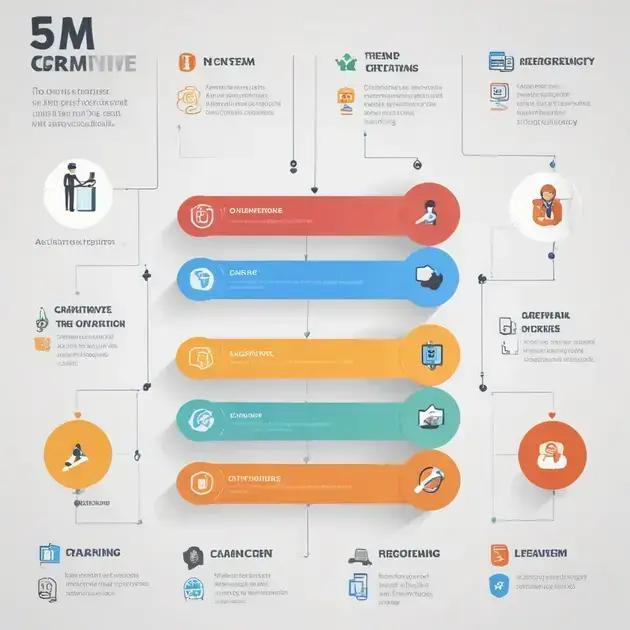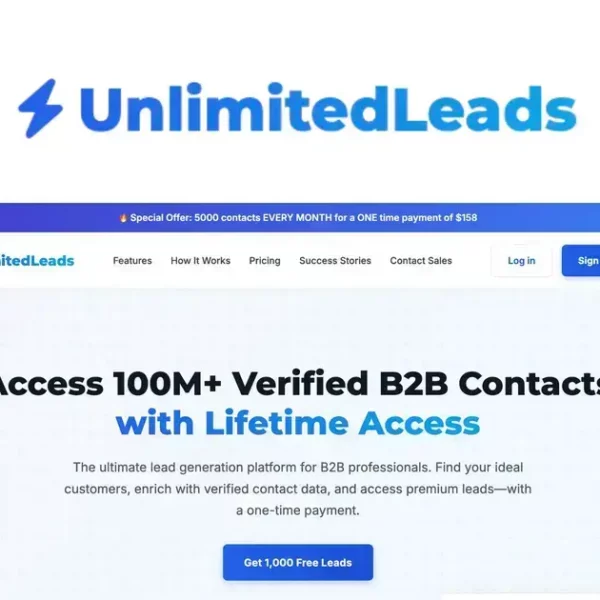Building your own CRM system allows for tailored solutions that meet your specific business needs, enhances user experience, and improves customer relationship management by integrating essential features like contact management and sales tracking.
Building your own CRM system can be a game changer for your business. Imagine having a customized solution that perfectly fits your specific needs! With the right tools and a little elbow grease, you can streamline processes, enhance customer relationships, and promote business growth.
Understanding CRM Systems
Understanding what a CRM system is essential for any business wanting to enhance customer relationships. CRM stands for Customer Relationship Management, and it refers to software that helps businesses manage interactions with current and potential customers.
A CRM system consolidates customer information, making it accessible to all relevant departments. This ensures that everyone in the organization can provide consistent and personalized service.
Key Functions of CRM Systems
CRM systems typically include functionalities such as contact management, sales pipeline tracking, and analytics. These tools allow businesses to understand customer behavior, segment their audience, and identify potential sales opportunities. With better data, businesses can improve targeting and increase sales conversions.
Types of CRM Systems
There are three main types of CRM systems: operational, analytical, and collaborative. Operational CRMs focus on streamlining customer interactions, analytical CRMs analyze customer data for insights, and collaborative CRMs enhance communication across different teams.
Importance of CRM Systems
Implementing a CRM system is crucial as it facilitates better organization of customer data. This leads to improved communication, enhanced customer satisfaction, and ultimately, increased sales. By effectively managing relationships, businesses can nurture leads and convert them into loyal customers.
Advantages of Building Your Own CRM

Building your own CRM system offers several unique advantages compared to using pre-packaged solutions. One major advantage is customization. When you create your own CRM, you can tailor its functionalities to meet the specific needs of your business and ensure it aligns perfectly with your workflow.
Flexibility and Scalability
Another key benefit is flexibility. A custom-built CRM can easily adapt to the changing requirements of your company as it grows and evolves. You can add new features, integrations, or modifications without being limited by third-party software constraints.
Cost Efficiency
Cost efficiency is also a significant factor. While the initial investment may seem high, over time, building your own system can save money by eliminating ongoing subscription fees associated with commercial CRMs. Additionally, you avoid paying for features that you may not use.
Enhanced User Experience
With a personalized CRM, you can create a user interface that enhances productivity and improves the user experience for your team. By focusing on user needs, you can minimize confusion and streamline processes, making training easier and reducing the learning curve.
Data Control and Security
Finally, building your own CRM provides greater control over your data. You can implement robust security measures tailored to your specific needs. This means better protection for sensitive customer information and compliance with data privacy regulations.
Key Features to Include
When you build your own CRM system, it’s vital to include key features that will enhance its functionality and usability. These features will directly impact how effectively your team can manage customer relationships and data.
1. Contact Management
A robust contact management system is essential. It should allow you to store and organize customer information, including names, emails, phone numbers, and interaction history. This data helps ensure that your team can provide personalized service.
2. Sales Pipeline Management
Integrating a sales pipeline management feature allows users to track opportunities through various sales stages. This helps in understanding where prospects are in the buying process and what actions are needed to close deals efficiently.
3. Data Analytics and Reporting
Analytics tools provide insights into customer behavior and sales trends. Including customizable reporting features allows your team to generate reports that highlight key performance metrics and help inform business decisions.
4. Task and Activity Management
Your CRM should include a task and activity management feature. This function helps assign tasks to team members, track deadlines, and manage follow-up activities effectively, ensuring nothing falls through the cracks.
5. Integration Capabilities
Lastly, consider integration capabilities with other software tools. Your CRM should easily connect with email platforms, marketing automation tools, and accounting software. This integration fosters a more unified workflow and enhances overall efficiency.
Step-by-Step Guide to Creating Your CRM

Creating your own CRM system can be a rewarding process that tailors the solution exactly to your business needs. Below is a step-by-step guide to help you build an effective CRM.
Step 1: Define Your Goals
Before building your CRM, define what you want to achieve. Identify the specific problems you’re addressing and set clear objectives. This will guide the features you need.
Step 2: Research Existing CRM Features
Explore different CRM solutions to understand what features are popular and beneficial. Make a list of must-have functionalities, like contact management, sales tracking, and reporting features.
Step 3: Choose the Right Technology
Select the technology stack you will use. This includes deciding whether to build your CRM from scratch, use a low-code platform, or customize existing open-source CRM software.
Step 4: Design the User Interface
Design an intuitive user interface. Keep it simple and focused on functionality. Make sure that users can easily navigate the system and access data quickly.
Step 5: Develop and Test the CRM
Begin the development process. As you build, perform regular testing to identify any bugs or flaws in the functionalities. Gather feedback from potential users to optimize the system.
Step 6: Train Your Team
Once the CRM is ready, conduct training sessions with your team. Ensure that everyone understands how to use the new system effectively, focusing on its features and benefits.
Step 7: Launch and Monitor
Launch your CRM and monitor its performance. Seek ongoing feedback from users, and be prepared to make adjustments or add features based on real-world usage.
Common Mistakes to Avoid
When you build your own CRM system, it’s important to avoid common pitfalls that can hinder its effectiveness. Here are some mistakes to steer clear of:
1. Not Defining Clear Goals
One of the biggest mistakes is failing to define clear goals for your CRM. Without specific objectives, it becomes difficult to build a system that meets your needs. Take the time to outline what you want to achieve and ensure that these goals guide the development process.
2. Overcomplicating Features
While it may be tempting to include many advanced features, overcomplicating your CRM can lead to user frustration. Focus on essential functionalities that users actually need. Keep it simple and intuitive to encourage team adoption.
3. Ignoring User Feedback
Once your CRM is in development, it’s crucial to gather user feedback. Ignoring this input can result in a system that doesn’t align with how your team works. Conduct user testing and adjust the CRM based on real-world experiences.
4. Underestimating Data Security
Data security should never be overlooked. Failing to implement adequate security measures can put sensitive customer information at risk. Make sure to incorporate strong security protocols to protect data integrity and comply with regulations.
5. Neglecting Training
Even the best CRM won’t be effective if your team doesn’t know how to use it. Neglecting training can lead to underutilization of the system. Provide comprehensive training sessions and ongoing support to help users become confident with the CRM.
6. Skipping Regular Updates
After launching your CRM, don’t make the mistake of leaving it unchanged. Regular updates are essential to improve functionality and address any issues. Stay proactive by continuously monitoring performance and adjusting as necessary.
In Summary: Building Your Own CRM System
Creating a custom CRM system can significantly enhance how you manage customer relationships. By defining clear goals and focusing on essential features, you can build a tool that truly meets your business needs.
Avoid common mistakes like overcomplicating features and neglecting user feedback. Remember that effective training and ongoing support are key to ensuring your team uses the CRM to its full potential.
With the right approach, building your own CRM can lead to improved efficiency and stronger customer connections, which is vital for growth and success in today’s competitive market.
FAQ – Frequently Asked Questions about Building Your Own CRM System
What are the main benefits of building my own CRM system?
Building your own CRM allows for customization to meet specific business needs, increases flexibility, and can save on costs in the long run.
How can I ensure my CRM system is user-friendly?
To ensure user-friendliness, focus on a simple design, intuitive navigation, and gather feedback from users during the development process.
What key features should I include in my CRM?
Key features to include are contact management, sales pipeline tracking, reporting and analytics, task management, and integration capabilities.
How do I train my team to use the new CRM?
Conduct comprehensive training sessions, provide user manuals, and offer ongoing support to help your team become confident and proficient.
What are common mistakes to avoid when building a CRM?
Common mistakes include not defining clear goals, overcomplicating features, ignoring user feedback, and neglecting data security.
How important is regular maintenance for my CRM system?
Regular maintenance is very important to ensure the CRM remains functional, secure, and up-to-date with the latest features and improvements.




